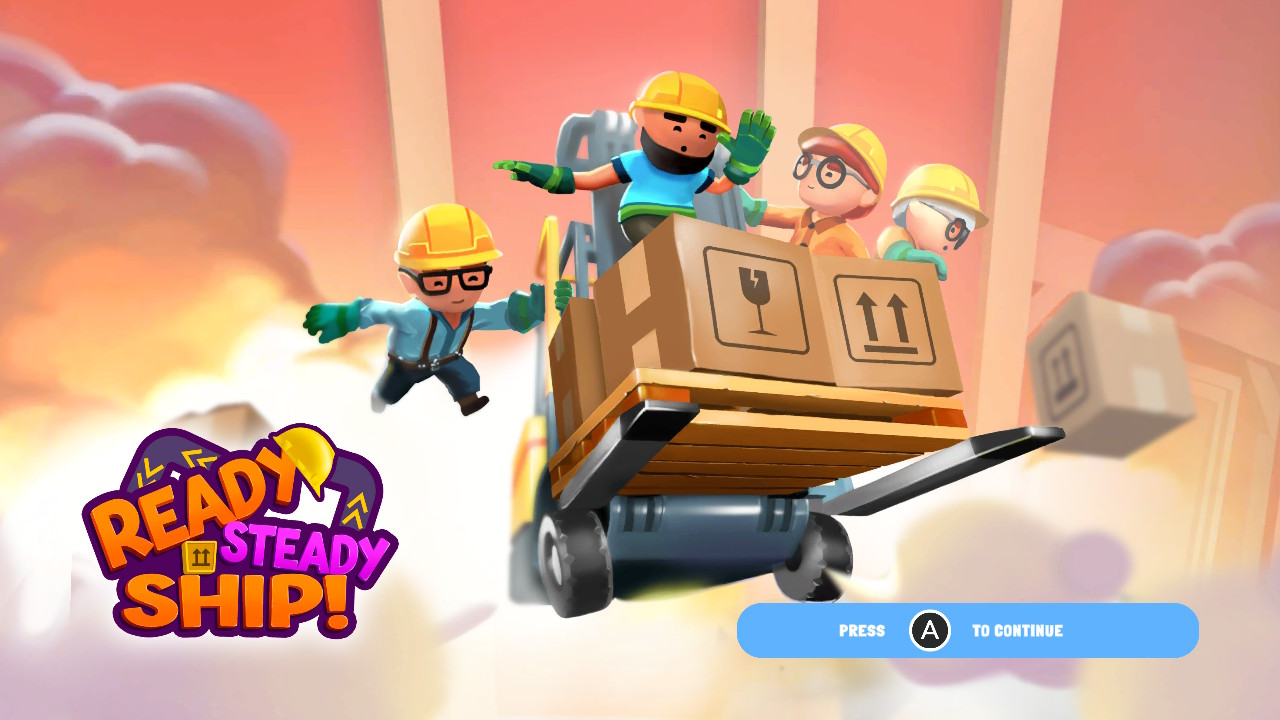Ready, Steady, Ship! is an action multiplayer title developed by Jollybits Games and published by Untold Tales. This physics-based game allows for solo or two-player couch co-op as you work in a factory shipping boxes. Each level gets more whacky than the last as the clock ticks down during your shift. It’s a fun challenge, but only for a little while.
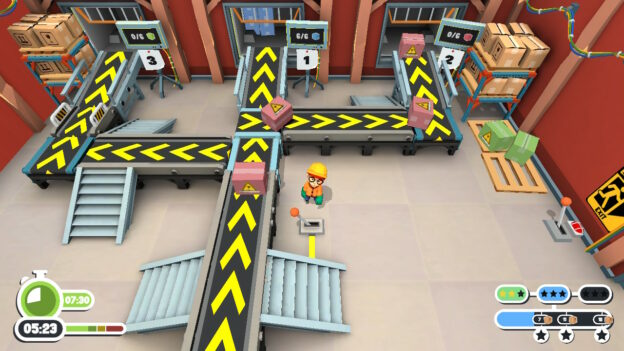
I first played the game solo to get used to the controls and see what the game was all about. Upon choosing an avatar, a cutscene shows your character sitting at home watching TV. A commercial comes on about saving the world by working at the best shipping company. Your character calls the number on screen, and you’re thrown into the first level, which also acts as a tutorial.
The gameplay for Ready, Steady, Ship! is simple. Your job is to connect conveyor belts, and ensure they’re facing the right way before placing boxes on them, leading the packages to their delivery truck. The boxes come in different colors, such as pink, blue, or green. Most of the time, the conveyor belts lead to different trucks. If you want to 100% the level, you’ll need to place the right colored boxes on the correct path to their corresponding truck.

Regarding controls, you’ll mostly use the A button to grab conveyor belts or boxes and B to throw the boxes. You can also sprint for a short time, but if you’re really in a hurry, there’s a coffee vending machine that gives you a speed boost for a longer time. I rarely used this because the physics often made things finicky.
Sure, the ragdoll-like movement is fun to watch and can be funny. However, the controls don’t always register . The A button would appear for me to pick up a box; I’d press it and walk away without the box. I had to get up close and personal with the items, press the button, and let the game figure out what I was trying to do. Oftentimes, I’d throw a box, miss the conveyor belt, and the box would get stuck in a spot I couldn’t get to. Instead of respawning after a certain amount of time, that was it. When this happens, there’s no way to 100% the level without restarting the whole thing.
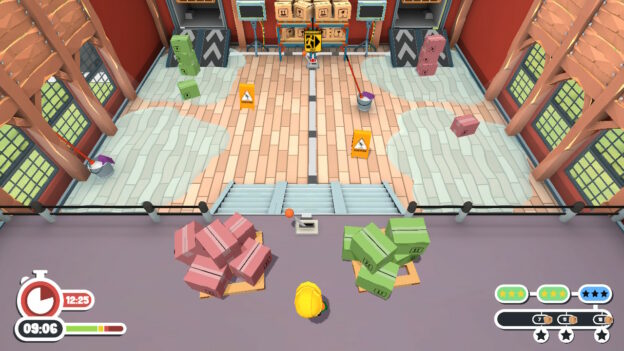
The good news is each level has three rooms. Once you complete a room, the door unlocks, and you can move on. However, there’s also an emergency exit button. So, if you get stuck in a room, you can give up and move on. Each level is timed. The clock doesn’t reset when you enter a new room. You earn stars based on how fast you beat the levels and also how many boxes you ship correctly. Earn enough stars, and you can unlock more levels.
Despite some of the glitches and slight frustration, I enjoyed my time playing solo. However, after a few levels, the game brings in forklifts. Forklifts and ragdoll physics do not mix. At least, not in Ready, Steady, Ship!
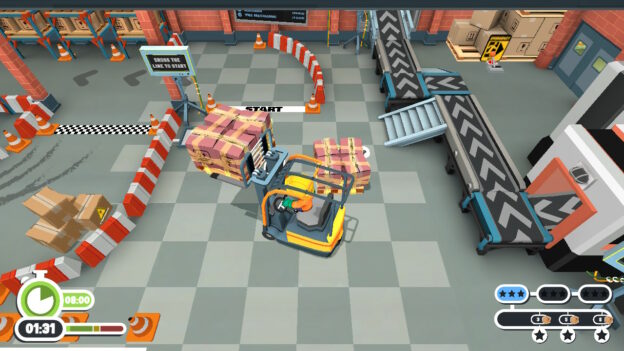
The forklift was nearly impossible to control. To accelerate or reverse, you use the L and R buttons. Instead of holding them down, you press the button once, and the forklift will continuously move until you hit the brake. It was highly frustrating to control where I was going while trying to operate the actual lift to pick up and transport crates of boxes. When I’d get as far as picking up the crate, I’d try to maneuver the forklift only for the physics to push the crate off the forklift, and I’d have to start the process over again. I almost always ran out of time and couldn’t complete the forklift levels.
So, I gave up on solo and played multiplayer with my sister. Ready, Steady, Ship! only allows up to two players locally. The levels for multiplayer are different than they are for solo, which was a nice touch. However, the game played the same. There was less chaotic fun and more frustration as the camera didn’t zoom out far when we were on opposite ends of the room.
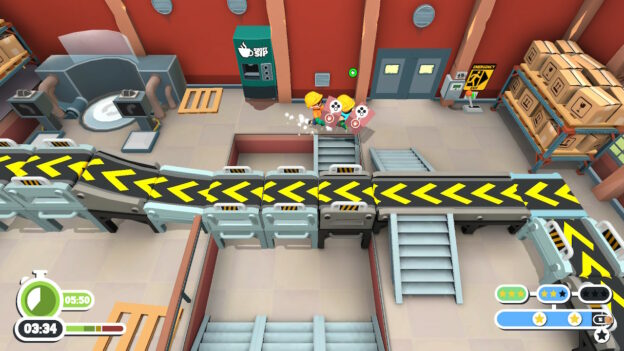
Once again, the controls were fickle as we attempted to work through the different levels. Similar to when I played solo, we had a fun time with it while we played. However, this most likely won’t be a go-to game of ours.
The strongest part of this title was the level design. The early levels start off normal but as you progress through the game, the rooms themselves are a puzzle. For example, one level has a pool filled with acid that you need to make your way across via metal grates moving back and forth. I had the most fun playing these types of levels, trying to figure out the design rather than shipping the boxes. And while the controls were simple, they didn’t always register, which brought me out of the game.
Review: Ready, Steady, Ship! (Nintendo Switch)
Fair
Overall, Ready, Steady, Ship! is a solid game. The controls were unfriendly at times, but the music was fun to listen to, and the level design was well done.

